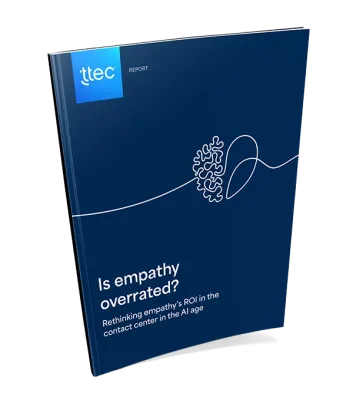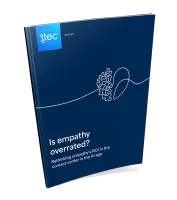This guest article first appeared on Route Fifty
When the COVID-19 pandemic hit, government agencies and organizations were forced to quickly innovate to meet a sudden rise in citizen inquiries and requests. They maximized staff, implemented AI-powered virtual assistants to deflect calls from at-capacity systems, transitioned to virtual call centers and more. So once the pandemic ends, returning to normal shouldn’t mean returning to the inefficiencies that plague government organizations.
Here are innovations that state and local call centers deployed in the midst of the pandemic that can be sustained and enhanced in a post-pandemic world.
Relieving overwhelmed phone lines and understaffed centers
Call centers are at the front line for citizens looking for answers and support. Many states, however, were not equipped to keep pace with the new challenges caused by COVID-19. The Wyoming Department of Workforce Services (DWS), for example, experienced an unprecedented surge in call volume as citizens raced to file unemployment insurance claims. Hold times were frustratingly long and many callers received busy signals.
DWS collaborated with a partner to leverage cloud and automation technology to deflect calls from the agency’s at-capacity system to a team of 30 experienced at-home agents to answer calls. As a result, callers no longer received busy signals when the on-premise system reached capacity.
When callers dialed a toll-free number dedicated to unemployment claims, an intelligent virtual assistant (IVA) immediately picked up and callers could ask questions such as “how do I file an unemployment claim?” or “do I qualify for unemployment insurance?” Pulling from the state’s existing knowledge base, the IVA provided an answer.
If more information was needed, the IVA connected the caller with an agent who could answer most questions. For complex requests, the agent transferred the caller to an in-house DWS representative. The IVA handled or deflected about 24% of calls, and about 76% of calls were routed to an agent.
Key takeaway: Using at-home agents enabled the agency to rapidly expand its capacity and scale back when necessary. And by routing calls to the appropriate resource—AI or human agent—callers receive faster support to address their simple or complex questions.
Empathetic human support enabled by technology
We can automate a lot of things but we can’t recreate the empathetic human-to-human contact. By digitally enabling call center agents with information, we allow them to focus on the citizens and lend an empathetic ear to their questions and concerns. Well-trained, experienced call center agents equipped with effective technology solutions play an important role in communicating information and promoting confidence and uptake.
For example, a nonprofit organization had succeeded in obtaining a deadline extension for low-income families to apply for Covid-19 relief funds from the North Carolina Department of Revenue. The organization needed to mobilize quickly to provide critical outreach support and assist low-income families in navigating the application process for the funds.
Speed was essential. Within 72 hours, a virtual call center was stood up and staffed with 60 experienced public sector agents. After the virtual call center was assembled, agents answered questions related to the grant application process and provided assistance filling out the application. During the two-week extension period, the agents helped nearly 25,000 families complete applications, resulting in over $8 million in grants.
Key takeaway: Equipping agents with the right tools and training to quickly access critical information enables them to focus on listening to citizens and ensure they receive the help they need.
Nimble and cost-efficient operations
Improving citizen services also requires rethinking, reenvisioning and reorganizing the way employees work. A survey conducted by PwC indicates that 55% of employees would like to continue working remotely at least three days a week once the pandemic ends.
In addition to allowing for more flexible work arrangements, government agencies could also rethink seasonal employees. For example, when staffing call centers for health insurance open enrollment support, agencies have to recruit seasonal licensed agents, increase the physical space to house all those associates and provide training, all of which is costly.
Instead of scrambling to hire and train temporary health insurance agents for peak seasons, state health departments could rotate the agents across countercyclical projects or shift them to other departments. This drives tenure, performance and reduces annual ramp expenses.
Key takeaway: Providing employees with workplace flexibility and rethinking the work they do increases efficiency and productivity, enables business continuity, and improves employee retention.
The goal should be not only to survive the coronavirus pandemic but to emerge stronger from it. COVID-19 has been a driving force for innovative thinking in countless ways. As government leaders continue to step up and improve citizen experiences, now is the time to think about how to expand those short-term wins into long-lasting improvements.















